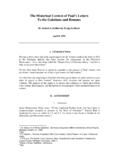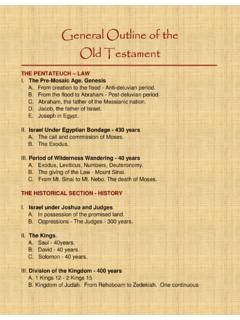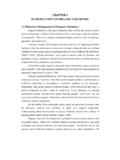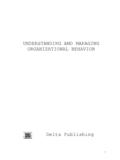Transcription of MERIT BADGE CENTER, PHILIPPINES The History of the ...
1 MERIT BADGE CENTER, PHILIPPINES The History of the philippine Flag During the philippine Centennial celebration, a set of 10 flags were prominently flown over every institution and government-owned buildings. This set of 10 flags became popularly known as the Evolution of the philippine Flag. What Evolution? philippine historians have raised issues and have rightfully challenged the claims of the set of 10 being the Evolution of the philippine Flag. According to the Manila Historical Institute and the National Historical Institute, the set of flags, excluding the present-day flag, are rightfully called Mga Bandila ng Rebolusyong Pilipino or The Flags of the philippine Revolution. Another issue raised by historians is the fact that these flags merely represent a fraction of the Katipunan battalions. Hence, these flags can hardly be referred to as the Flags of the philippine Revolution. It could only be concluded that calling this set of flags Evolution is very misleading, as our present day flag did not evolved from these Katipunan flag.
2 It is true however that some of its features were taken from these flags, but then again, it did not evolved from it. It is also true that the flags of the Katipunan have never taken as a nationally recognized symbol as to represent the Filipino nation. The Katipunan Three flags were used by the Katipunan that was believed to be originally sewn by Andres Bonifacio s wife, Gregoria de Jesus with the aid of Benita Rodriguez. These three are the most common variation of the Katipunan flags. The blood red background is the similar features of all three flags, including the letter K to represent the Katipunan. In line with the Boy Scouts of the PHILIPPINES (BSP), the single K flag is not recognized as part of the BSP s list of the Evolution of the philippine Flag. FUN FACTS The philippine Flag was originally sewn in Hong Kong. It was given to a man leaving Hong Kong on a ship named McCullough, bound for Manila. Several weeks later that man became the first president of the first Asian democracy.
3 MERIT BADGE CENTER, PHILIPPINES The History of the philippine Flag Katipunan Councils There are two prominent factions of the Katipunan led respectively by Andres Bonificio and Emilio Aguinaldo. Both gained support from different sectors of the Katipunan. Bonificio had his Magdiwang Council and Aguinaldo had his Magdalo Council. The Magdiwang Council had a sun with sixteen- (16) rays. It uses the similar red background of the Katipunan flag. Some historians say that the number of rays is indefinite however. This flag was believed to be the flag present when the Katipuneros tore their cedulas upon their discovery. The Magdalo Council flag also used the sun. It had a pre-Hispanic K superimposed on the center. The sun had eight- (8) rays to represent the first eight- (8) provinces that pledged its support to fight under Aguinaldo s banner and to start the philippine revolution. The Revolutionary Government The leaders of the Katipunan decided to fight under Aguinaldo s banner.
4 Aside from being formally educated, Aguinaldo was winning his battles while Bonifacio was struck by a number of losses. For this same reason, Aguinaldo s flag was said to have become the basis for the design of the new flag of the revolutionary government the Sun of Liberty. This same revolutionary government was responsible for ordering the execution of Andres Bonifacio. Bonificio was charged with treason for inciting rebellion against the new government. The flag was approved on March 17, 1897 in Naic, Cavite. Battalion Flags One of the most criticized part of the proposed evolution of the philippine flag is the inclusion of three battalion flags of the Katipunan. Historians believe that if these flags were to be included into the evolution, other battalion flags should be considered as well. FUN FACTS The eight provinces symbolized by the sun s rays were: Manila, Tarlac, Batangas, Laguna, Bulacan, Pampanga, Nueva Ecija, and Cavite. MERIT BADGE CENTER, PHILIPPINES The History of the philippine Flag According to many historians, these flags never took the significance of a national symbol.
5 These flag does not come in any significant order. The first flag was the flag of General Mariano Llanera who fought in the province of Bulacan, Tarlac, Pampanga, and Nueva Ecija. His flag was most famously called Bungo ni Llanera or Llaner s Skull. Unlike most of the Katipunan banners, his was on a black background. The second flag is that of Pio del Pilar, one of Aguinaldo s most trusted Generals. Due to his many victories, his flag was famously called Ang Bandila ng Matagumpay or The Flag of the Victorious. Superimposed on the famous red background was a triangle (believed to be an equilateral triangle). Each corner of the triangle bears the letter K and on the triangle s center is a rising sun with eight rays. The third and last flag is the flag of Gregorio del Pilar, the youngest general of the Katipunan and fondly called as the boy general. His flag was patterned after Cuba, already a former Spanish colony at the time.
6 His flag was the first to use three colors. The flag took its last stand against the Americans in Tirad Pass, Ilocos Sur, defending the retreating armies of Aguinaldo. The Real Evolution During Aguinaldo s exile in Hong Kong, he and the Junta Patriotica or the Patriotic Council devised was is to be known as the flag to represent the first philippine republic. The flag was sewn by Marcela Agoncillo, Lorenza Agoncillo, and Delfina Natividad. It was sewn at 353 Morrison Hill, Hong Kong. This same flag was the flag raised during the declaration of the philippine independence in Kawit, Cavite, on June 12, 1898. Unlike the present day flag, the original flag had a mythological sun with a face, similar to the flag flown by the revolutionary government. By the fall of the first philippine republic and when the American colonial power took control of the islands, sedition laws took into effect that banned the display of the flag of the first republic.
7 It was until 1919 when the ban was lifted. MERIT BADGE CENTER, PHILIPPINES The History of the philippine Flag The flag retained the dimensions of the Aguinaldo s flag as well as the Mythological sun, but without a face. Historians believe that the original flag used the red and blue colors of the Cuban flag and was changed to the American colors since the American colors where the only cloth colors available during the era. In 1936, the PHILIPPINES became a Commonwealth of the United States of the America. By executive order, Commonwealth President Manuel L. Quezon specified the dimensions of the flag which became the standardized specification of the flag followed up to the present time. Debates Rages On The color blue on the flag is one of the topics being debated by historians. The list of blues includes: the Cuban blue, dark blue, sky blue, navy blue (American blue), and the Yale blue. The American blue was the shade used for most of the flag s lifetime as a national symbol and was changed during the Marcos era into sky blue, but was reverted back to the American blue during the Aquino administration.
8 As a resolution to the moot point, the philippine Centennial Commission officially changed the shade to Royal Blue in 1998. The religious sector debates the sun as being a Christian symbol. Many believe that a Crescent Moon should be added to symbolize the Muslims and a Budong Cane as well to represent the native Cordillera people. A recent addition to the debate is the proposal to add a 9th ray to the sun to represent the Muslim nation and the native Cordillera people who fought for independence from Spanish MERIT BADGE CENTER, PHILIPPINES The History of the philippine Flag colonial rule. Also, the late statesman Blas Ople, serving as Foreign Affairs Secretary, called on historians and constitutionalist to include Quezon Province as one of the provinces represented in the rays of the sun. He cited the historical battle of the Confradia de San Jose a group organized by Apolinario Hermano Pule de la Cruz who won a battle against Spanish authorities on October 23, 1841.
9 References Boy Scouts of the PHILIPPINES . 13 and Above: Senior Scout Handbook, Vol. 1. Manila: Boy Scouts of the PHILIPPINES . 2000. Boy Scouts of the PHILIPPINES . Respecting Our Flag. Manila: Boy Scouts of the PHILIPPINES . 1993. Flags of the World. PHILIPPINES . August 16, 2004. Ople Urges Putting Ninth Ray in Flag for Quezon Province . August 20, 2003. Merci Melchor. Bandila: The Story of the philippine Flag. Makati City: Tahanan Books for Young Readers. 1998.







